Trek-Segafredo to use disc brake bikes in Paris-Roubaix and Grand Tours
Team working on wheel change technique but weight no longer an issue
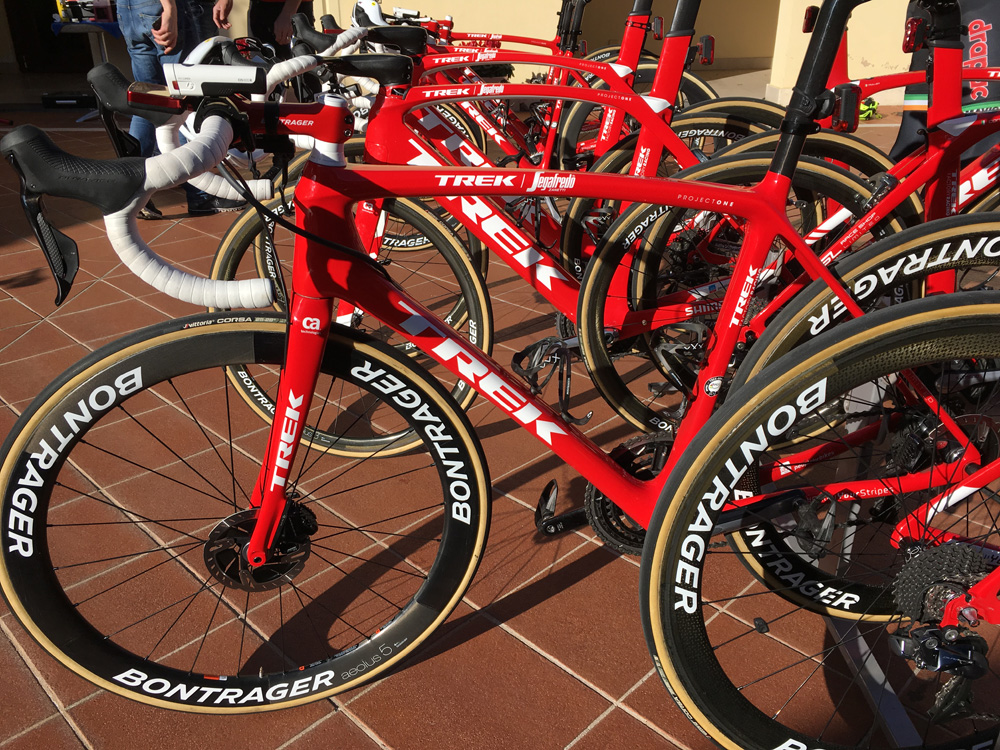
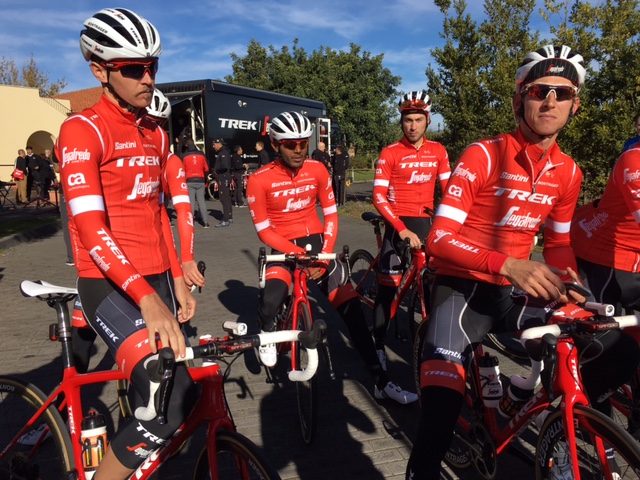

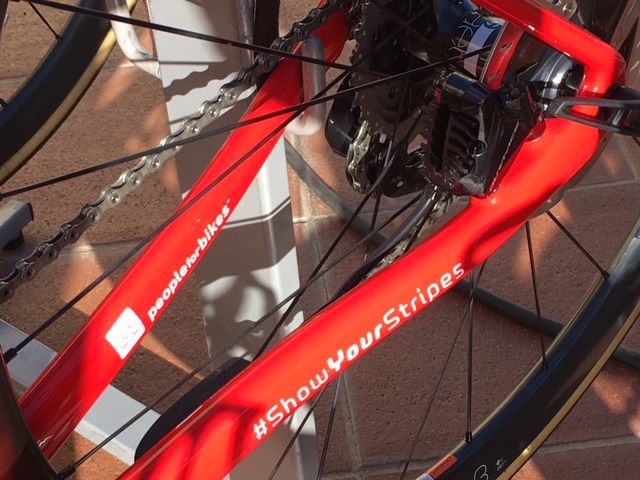
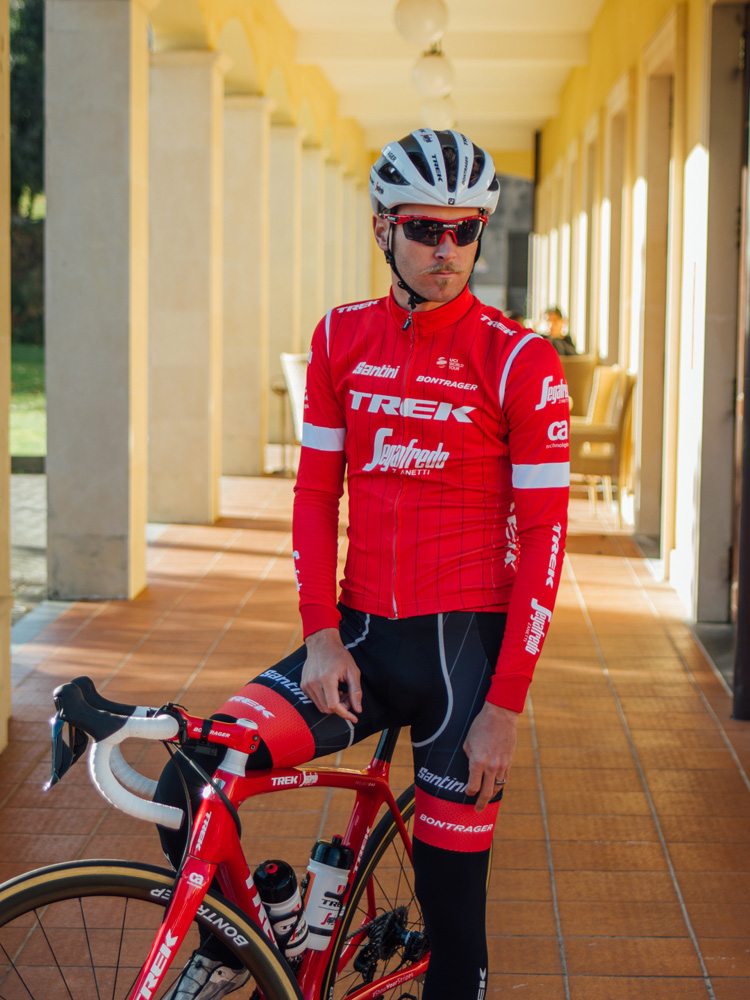
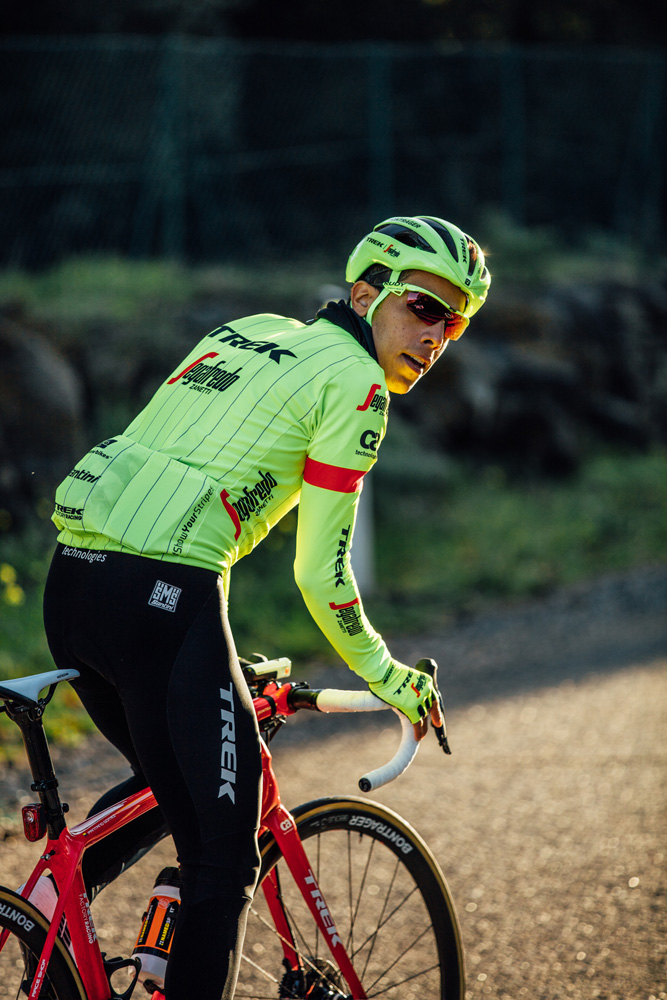
Trek-Segafredo will use disc brake bikes much more in 2018, with Grand Tour riders such as Bauke Mollema and new signing Gianluca Brambilla set to use Trek's Emonda Disc bikes at the Tour de France and Giro d'Italia.
Aqua Blue Sport to compete on 3T Strada disc bike with 1x drivetrain in 2018
Disc brake trial continues into fourth year in 2018
British Cycling to allow disc brakes in races in 2018
Trek becomes title sponsor of Drops women's team for 2018
Trek-Segafredo stay with red pin-strip racing kit for 2018 - Gallery
Classics leaders John Degenkolb and Jasper Stuyven are due to use Trek's Domane Disc bikes in Paris-Roubaix and other races after the US-based brand and its WorldTour team worked to improve the time needed for thru-axel wheel changes.
Cyclingnews has spotted several other teams training on disc brake bikes this winter and they are also expected to race more on the new technology that remains officially 'on trial' under UCI rules for 2018.
It is expected the UCI will decide on the safety and technical standards, as well as any neutral support issues, for the 2019 season following the trials. Despite concerns from some riders, it seems that safety is no longer a major issue in the professional peloton after the edge of the disc rotors were flattened. Several riders won races in disc brake bikes in 2017, including Marcel Kittel at the Tour de France.
Trek used the 2017 season to further develop their range of disc brake bikes and waited for Shimano to roll out its Dura-Ace disc-brake groupset. At the Trek-Segafredo training camp in Sicily in December, Cyclingnews saw Mollema and other Grand Tour riders training on disc brakes.
Trek's Matt Shriver, the technical director for Trek-Segafredo claimed that the Emonda Disc weighs 6.8kg, right on the UCI weight limit, meaning the benefits of disc brakes outweigh a loss in aerodynamics.
"Everyone who was on a Emonda rim-brake bike in 2017 will be on a disc-brake bike in 2018 in every race. That means all of the climbing guys," Shriver told Cyclingnews. "Before the concerns were weight, wheel-changing and safety. Now with rounded edges, bikes at 6.8kg, it's just about having the wheel change as fast as or faster than caliper brakes.
Get The Leadout Newsletter
The latest race content, interviews, features, reviews and expert buying guides, direct to your inbox!
"A year ago I didn't feel like we were ready as a company to introduce disc brakes to the riders. Now we have product that is ready, as does our partner Shimano. We introduced the Emonda Disc last summer and that gave the riders a bike that performs exceptionally in both wet and dry conditions. A 58cm Emonda Disc weighs 6.8kg, so weight is not an issue and still respects the UCI rules.
"We're never going to push this onto the riders. They've had a chance to ride them and see the benefits. Now were at a point where they say. 'Yeah,' they're awesome,' so it's time to embrace the new technology. There are some tiny details we're working but that's part of the process and why we have a pro team. The racers are the most in touch with their equipment. They know how it needs to perform."
Disc brakes for Paris-Roubaix
The Classics riders will have the option of the Domane Disc, Domane with rim brakes or even the Madone aero bike, depending on the races and conditions. However Trek-Segafredo are working to ensure riders use the same braking system in specific races.
"The Classics are so chaotic that having riders in the same race on different braking systems would be a problem," Shriver explained.
"The entire team will be on disc brakes in races like Paris-Roubaix. There are some challenges we need to get over with the wheel changes and that's something we're still working on and I'm sure that other teams are too. The front wheel change is faster than a rim brake but the rear wheel change is slightly slower than a rim brake. We're working so that there's no penalty on riding a disc-brake bike."
Rider concerns about safety have dominated the debate about the use of disc brakes, convincing the UCI to continue the trial of disc brakes in 2018. However, Shriver highlights how the ongoing 'trial' has slowed the move to disc brakes in the bike industry.
"I think most manufacturers are waiting for the UCI to formalise the rule before fully embracing disc brakes. It's a very expensive endeavour to switch your engineering resources and frame moulds to something that may or may not happen," Shriver explained. "As soon as UCI does the full regulation change, then I think you see the brands change a lot more, not only the major brands but also the other brands."
Shriver is in favour of a full switch to disc brakes in the peloton, warning against a two-system peloton for safety and fair-play reasons.
"The only thing I see a potential harm to success of disc brakes is if they keep two systems in the pro peloton. I think the riders have expressed that too; there are some differences in performance between rim and disc brakes," he explained.
"There could also be issues if the UCI changes the 6.8kg weight limit rule. That fine by us because our disc brake bikes are at 6.8kg but someone could make a super light rim brake to get an advantage. That's another reason why they should keep it at a one-brake system rule. At some point there should be a rule change so that there's only one braking system in the mass-start races. It'd make it easier and safer for everyone."

Stephen is one of the most experienced member of the Cyclingnews team, having reported on professional cycling since 1994. He has been Head of News at Cyclingnews since 2022, before which he held the position of European editor since 2012 and previously worked for Reuters, Shift Active Media, and CyclingWeekly, among other publications.